Deep crustal structures interpreted from potential field data along deep seismic sounding transects in Australia
Irena Kivior A , David Boyd B , David Tucker C , Stephen Markham A , Francis Vaughan A , Fasil Hagos A and Leslie Mellon AA Archimedes Consulting.
B The University of Adelaide.
C Flinders Exploration.
The APPEA Journal 55(2) 450-450 https://doi.org/10.1071/AJ14085
Published: 2015
Abstract
Energy spectral analysis techniques have been applied to magnetic and gravity data acquired across the Olympic Dam cratonic area in Australia and sedimentary basins along the Equatorial Margin of Brazil. Analysis has been conducted along two Deep Seismic Sounding lines (DSS) acquired by Geoscience Australia. There is a good correlation between interfaces found in this analysis and structures interpreted from the seismic data.
Interpretation of gravity data using energy spectral analysis along the DSS survey lines show a number of deep crustal structures are evident, including the Moho which was detected using gravity data, while similar analysis of the magnetic data show indications of the Curie isotherm. In addition, the analysis was extended away from the seismic lines to detect many deep crustal horizons and structures at considerable distances from the DSS lines.
The results obtained from energy spectral analysis across this area in Australia encouraged the application of this technique on the Equatorial Margin of Brazil, where the potential field data is of much lower resolution. This suggests that a much wider application of this approach could be highly valuable to investigate the deep structure under other sedimentary basins and to assist heat flow studies.

Irena Kivior obtained a master of engineering from the Academy of Mines and Metallurgy in Krakow, Poland, and a PhD in geophysics from the University of Adelaide. She worked for mineral exploration companies and in the coal industry after migrating to Australia. After her PhD and post-doctorate studies, she established Archimedes Consulting, where she is director and principal geophysicist. Member: AAPG, SEG and EAGE. |
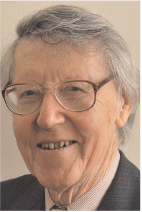
Professor David Boyd is Emeritus Professor of Geophysics, University of Adelaide. He was chief geophysicist for 15 years at Hunting Geophysics in London. From 1969 until 1991 he was Professor of Geophysics at the University of Adelaide. He has been involved in hydro-carbon exploration in Europe, Africa, southern Asia and Australia for more than 50 years. He acts as a geophysical adviser to Archimedes Consulting on all aspects of potential field geophysics. |
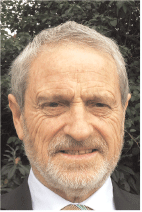
David Tucker has a PhD (geophysics) from the University of Adelaide and has broad experience of more than 38 years in the resources industry, working for government institutions and mining companies from field surveys to management in Australia and Africa. He was previously principal research scientist with the Bureau of Mineral Resources (now Geoscience Australia) airborne geophysical division where he oversaw the introduction of high quality geophysical surveys for the exploration industry. He has been a principal in a petroleum exploration joint venture in the South Australian Stansbury Basin. He specialises in geophysical survey advice, design, implementation and interpretation of airborne, ground and down hole surveys. |
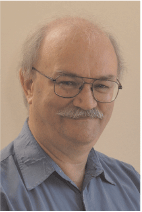
Stephen Markham graduated from Flinders University with a BSc (Hons) and also completed an MSc in geophysics. Stephen’s research focused on the application of high resolution aeromagnetic data across the Otway Basin. Since 1997, he has worked for Archimedes Consulting as a senior geophysicist and he is now chief geophysicist, working on the analysis of potential field data over sedimentary basins. Member: ASEG. |
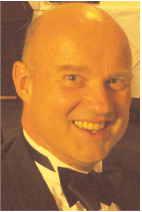
Francis Vaughan obtained his PhD (computer science) in 1996 from the University of Adelaide. He has an extensive background in high performance computing and in university level teaching and research. He provides expertise to Archimedes operations and to the Archimedes research and development group. He is involved in the study of the application of spectral analysis techniques, high performance aspects of computer processing, visualisation and signals processing. |

Fasil Hagos obtained a bachelor’s degree in geology from Addis Ababa University, Ethiopia and a master of Spatial Information Science from the University of Adelaide, Australia. He has worked as an assistant lecturer of geology at the University of Asmara, Eritrea, and as a geologist at the Department of Mines and Energy in Eritrea. He is a senior geologist at Archimedes Consulting, working on geological interpretation of potential field data. |
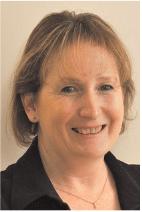
Leslie Mellon graduated from the University of South Australia with degrees in geology and hydrology and she completed her post-graduate studies in groundwater hydrology at Flinders University. After graduation, she worked as a geologist in mineral exploration. Since 2010, Leslie has worked at Archimedes Consulting as a structural geologist and she is now a project coordinator. |
References
Blakely, R.J. (1988). Curie temperature isotherm analysis and tectonic implications of aeromagnetic data from Nevada. Journal of Geophysical Resources 93, 11,817–32.Drummond, B., Lyons, P., Goleby, B., and Jones, L. (2006). Constraining models of the tectonic setting of the giant Olympic Dam iron oxide–copper–gold deposit, South Australia, using deep seismic reflection data. Tectonophysics 420, 91–103.
Kivior, I., Shi, Z., Boyd, D., and Mcclay, K.R. (1993). Crustal studies of South Australia based on energy spectral analysis of regional magnetic data. Exploration Geophysics 24, 603–8.
Kivior, I., Yates, S., Markham, S., Vaughan, F., and Damte, S., 2007—Imaging basement and intra-sedimentary horizons with spectral methods applied to HRAM data in Sirt Basin, Libya. EGM International Workshop (EAGE), Capri, Italy.
Ross, H.E., Blakely, R.J., and Zoback, M.D. (2006). Testing the use of aeromagnetic data for the determination of Curie depth in California. Geophysics 71, L51.
Okubo, Y., Graf, R.J., Hansen, R.O., Ogawa, K., and Tsu, H. (1985). Curie point depths of the island of Kyushu and surrounding areas, Japan. Geophysics 50, 481–94.
Matos, R.M.D., and Waick, R.N., 1998—A unique transform margin: the Equatorial Atlantic. Proceedings of the Rio’98 AAPG International Conference and Exhibition, 798–9, Rio de Janeiro, Brazil.
Spector, A., and Grant, F.S. (1970). Statistical models for interpreting aeromagnetic data. Geophysics 35, 293–302.


